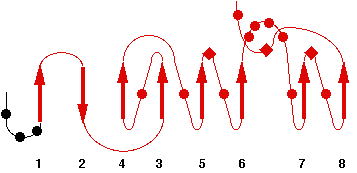4XVC
Name : Crystal structure of an esterase from the bacterial hormone-sensitive lipase (HSL) family E40 in complex with PMSF
Revelation date : 25-Mar-2015
Family : Hormone-sensitive_lipase_like
Gene_locus : 9bact-E40
PDB file : ESTHER: header of PDB entry RCSB: Full entry
Comment
Yuzhong Zhang, Pingyi Li
Ligand :
References (1)
| Title : Interdomain hydrophobic interactions modulate the thermostability of microbial esterases from the hormone-sensitive lipase family - Li_2015_J.Biol.Chem_290_11188 |
| Author(s) : Li PY , Chen XL , Ji P , Li CY , Wang P , Zhang Y , Xie BB , Qin QL , Su HN , Zhou BC , Zhang YZ , Zhang XY |
| Ref : Journal of Biological Chemistry , 290 :11188 , 2015 |
| Abstract : Li_2015_J.Biol.Chem_290_11188 |
| ESTHER : Li_2015_J.Biol.Chem_290_11188 |
| PubMedSearch : Li_2015_J.Biol.Chem_290_11188 |
| PubMedID: 25771540 |
| Gene_locus related to this paper: 9bact-E40 |
Representative scheme of Prolylcarboxypeptidase structure and an image from PDBsum server

